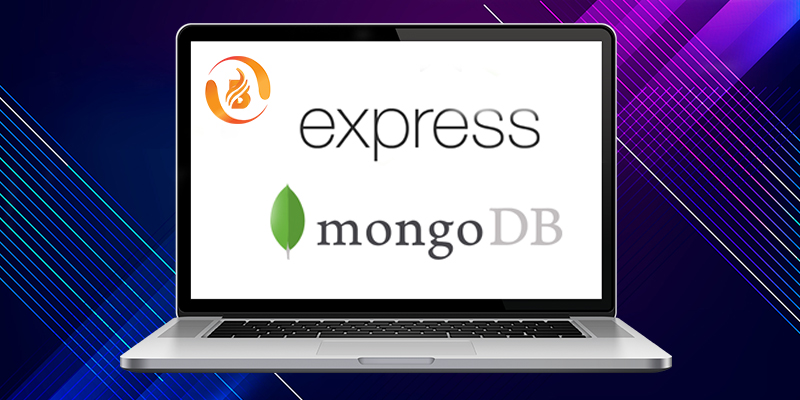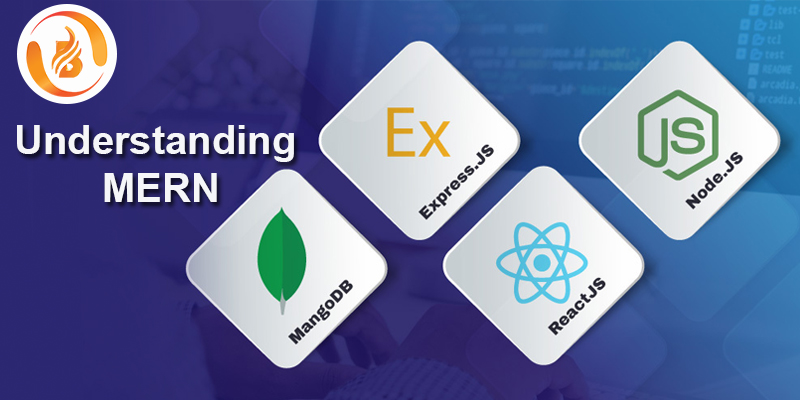Introduction to MERN
MERN is a powerful and popular stack for Web Application Development Company In India. It comprises four essential technologies: MongoDB, Express, React, and Node.js. Each component plays a vital role in the development process, enabling developers to create robust, scalable, and efficient applications.
Understanding the MERN Stack
MongoDB: The Database
MongoDB is a NoSQL database that stores data in JSON-like documents. It offers flexibility and scalability, making it ideal for handling large amounts of data in Web Application Development Company In India.
Express: The Back-End Framework
Express is a lightweight back-end framework for Node.js. It simplifies building APIs and handling HTTP requests, allowing developers to focus on application logic.
React: The Front-End Library
React is a JavaScript library for building user interfaces. Its component-based architecture and virtual DOM enable developers to efficiently create interactive and dynamic front-ends.
Node.js: The Server Environment
Node.js is a server-side JavaScript runtime environment. It allows developers to execute JavaScript code outside the browser, enabling server-side operations for Web Application Development Company In India.
Setting Up the MERN Environment
Before diving into development, you need to set up the MERN environment. Here’s a step-by-step guide to getting started:
Installing Node.js and NPM
To begin, install Node.js and NPM on your machine. Node.js comes with NPM, the Node Package Manager, which allows you to manage project dependencies effortlessly.
Creating a New React App
Use the create-react-app command to initiate a new React application. This command sets up the basic boilerplate code for your front end.
Connecting MongoDB with Node.js
Integrate MongoDB with Node.js by installing the necessary dependencies and connecting to your database.
Setting Up Express Server
Create an Express server to handle API requests and serve your React app: Configure routes and middleware to manage incoming requests effectively.
Building the Back-End with Express and MongoDB
Now that your environment is ready, start building the back end using Express and MongoDB:

Designing the Database Schema
Plan and design the database schema to represent your application’s data accurately. A well-structured schema is essential for smooth data handling.
Creating RESTful APIs
Implement RESTful APIs using Express to define the endpoints for your application. These APIs will handle CRUD (Create, Read, Update, Delete) operations.
Implementing CRUD Operations
With the APIs in place, code the logic for CRUD operations to interact with the MongoDB database. It will allow users to create, read, update, and delete data.
Securing Endpoints with Authentication
Secure your API endpoints by adding authentication middleware. Implement user authentication to control access to sensitive data and actions.
Developing the Front-End with React
Now that the back end is ready shift your focus to the front-end development using React:
Building Components and UI Elements
Divide your application into reusable components and UI elements. This modular approach simplifies development and maintenance.
Handling State and Props in React
Manage the application’s state using React’s state and props. It allows for dynamic content rendering and interactive user experiences.
Managing Forms and User Input
Handle user input effectively by creating forms and implementing input validation. Providing a seamless user experience is essential for any application.
Implementing Client-Side Routing
Implement client-side routing using React Router. It enables smooth navigation within your application without refreshing the page.
Integrating Back-End and Front-End
The real power of MERN comes from connecting the back end and front-end:
Fetching Data from the API
Use React’s fetch API or Axios to retrieve data from your back-end API. Display the data fetched from the server in your React components.
Displaying Data in React Components
Render the fetched data in your React components, ensuring the user interface is updated with the latest information.
Handling User Interactions
Implement user interactions and events that trigger API calls, updating the database as required. It enables seamless communication between the client and server.
Authentication Flow Between Front-End and Back-End
Establish a secure authentication flow between the front end and back end. Manage user sessions and handle authentication-related actions efficiently.
Advanced MERN Concepts
Take your MERN skills to the next level with these advanced concepts:
State Management with Redux
Integrate Redux to manage the global state of your application. Redux simplifies state management in large-scale projects.
Real-time Communication with WebSockets
Implement real-time communication using WebSockets. It enables instantaneous data updates and a more interactive user experience.
Server-Side Rendering (SSR)
Explore server-side rendering (SSR) to improve your application’s performance and SEO. SSR generates initial page content on the server, enhancing loading times.
Scalability and Deployment Considerations
Learn about scalability and deployment considerations to ensure your MERN application can handle increased traffic and user demand.
Best Practices for MERN Development
Adhere to these best practices for efficient MERN development:
Code Organization and File Structure
Maintain a clean and organized codebase with a well-defined file structure. It makes collaboration and future updates more manageable.
Error Handling and Debugging
Implement robust error handling and debugging techniques to identify and resolve issues quickly.
Performance Optimization Techniques
Optimize your MERN application for better performance and faster loading times.
Version Control and Collaboration
Use version control tools like Git and collaborate effectively with other developers using platforms like GitHub.
Conclusion
MERN is a powerful and versatile stack that empowers developers to build modern web applications. By combining MongoDB, Express, React, and Node.js, developers can create feature-rich, scalable, and efficient applications that meet the demands of today’s users. Whether you’re building a small project or a large-scale application, MERN has the tools and capabilities to bring your ideas to life.
Visit us at: www.biovustechnologies.com







